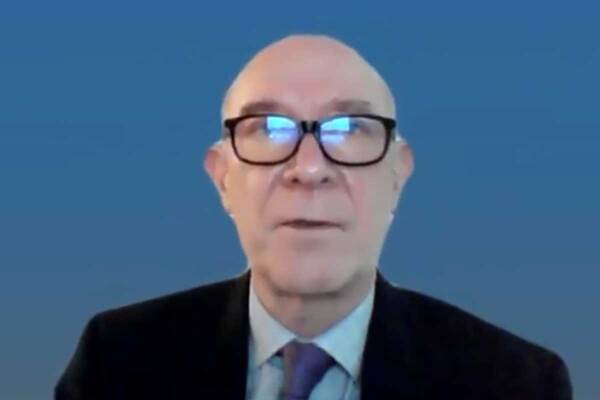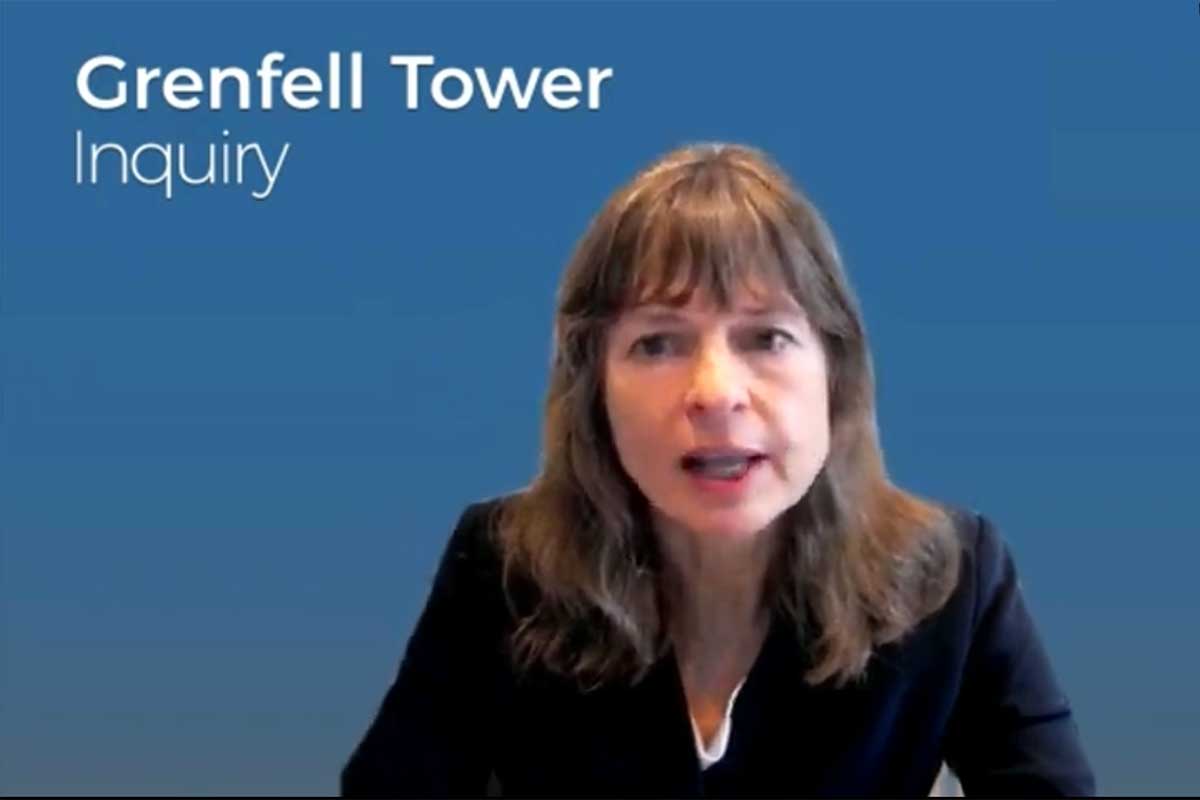Failure to identify disabled Grenfell Tower residents before fire ‘not acceptable’, inquiry hears
A failure to identify disabled people who would have struggled to escape Grenfell Tower in a fire was “not acceptable” and meant the fire risk assessment of the building was not “suitable and sufficient”, the inquiry into the fire heard today.
Giving a second day of evidence, expert witness Dr Barbara Lane was questioned at length about her view of the absence of any details concerning disabled and vulnerable residents in risk assessor Carl Stokes’ assessments of the tower.
This is a critical issue for this phase of the inquiry, which has previously heard that 41% of the disabled residents of Grenfell Tower died in the blaze – many of them unable to escape as fire and smoke spread.
Mr Stokes simply copy and pasted a similar statement across four separate assessments between 2012 and 2016, which said there was no evidence of disabled residents, but building manager Kensington and Chelsea Tenant Management Organisation (KCTMO) was gathering data through its ‘TP Tracker’ system.
In actual fact, this system had been abandoned in September 2013 and Mr Stokes never inquired to see whether any residents had been identified, or what had become of the evidence-gathering process.
He defended this approach when he was questioned earlier this year, saying it was up to KCTMO to inform him if any residents with disabilities were identified.
But Dr Lane said: “In my opinion, it’s not acceptable. For me it’s contradictory… he didn’t actually have access to [the tracker system] and he didn’t know what it contained, so he needed to make that clear.”
She added that officers at KCTMO should also have raised the issue when reading the assessment, as they should have known that the system he was referring to for data collection was “obsolete”. “So I don’t see it as all being on Mr Stokes,” she said.
Earlier, she explained her view that identifying disabled residents and planning for their escape in an emergency was a legal requirement before the Grenfell Tower fire, despite a government-endorsed guidance document which played down the need to do so.
She said the Regulatory Reform (Fire Safety) Order 2005 created a legal requirement to ensure all occupants of buildings could escape, and subsequent British Standards made clear that this included disabled and vulnerable residents without the assistance of firefighters.
This applied even in buildings which utilised a stay put policy, Dr Lane said.
“There is this common understanding that stay put means no one leaves a building in the event of a fire, and I think I’ve been very, very clear that that is completely wrong,” she said.
“When there’s a fire in a flat, it typically… will stay in the flat, it might spread to the flat next door. [But] all those people have to be able to evacuate the building – that’s just in the normal scenario.
“Any person who makes that decision knowingly [to allow a situation where disabled people cannot escape without the assistance of the fire service] is leaving people even in the reasonable scenario without a means of escape.”
She added that this is an issue that is “not dealt with very well” in the industry, and said her advice on this issue was “not always popular” with clients.
“It can be a difficult problem to resolve, I’m very aware of that. But any risk assessor that doesn’t make that clear isn’t making a suitable and sufficient risk assessment because they’ve not expressed the different risk level to a person who can’t evacuate,” she said.
The evidence presents a challenge for the inquiry, as it contradicts the prior witness, Colin Todd, who told the inquiry that the need to provide a means of escape without the assistance of firefighters did not apply to “disabled people in blocks of flats”.
He had said doing so was “not practicable” and the stay put policy was generally much safer than an attempted evacuation for these residents.
Guidance published by the Local Government Association in 2011, drafted by Mr Todd’s consultancy and endorsed by government, said it was “usually unrealistic” to plan for the escape of disabled flat residents.
But Dr Lane today said she “could not reconcile” this advice with other guidance documents and said it amounted to accepting “a fixed risk level” for any vulnerable person who could not use the stairs to evacuate. “I am not able to explain the thinking or the consideration of risk acceptance and risk consideration that went into writing that,” she said.
A government consultation on the provision of evacuation plans for disabled people recently closed, with new guidelines expected to be published next month.
Dr Lane was also critical of Mr Stokes’ failure to say more about the danger of missing self-closers on flat entrance doors, despite being aware that this was a problem in Grenfell Tower.
Missing self-closers have been identified by the inquiry as a key reason smoke spread so rapidly through the lobbies and stairs within the building.
He was warned in December 2015 that a caretaker for the tower was removing self-closing devices, but did not include this in his next risk assessment or verify that the removed devices had been fixed.
She also said he made a “significant error” by asserting that the lifts in the building were up to ‘firefighting’ standards and could be used to assist in an evacuation.
“It was a significant error for Mr Stokes not to have made it his proper business to know which lift was installed at Grenfell Tower,” Dr Lane said.
This also contrasts with the evidence given by Mr Todd, who has described the error as minor.
Dr Lane will continue giving evidence tomorrow.
Sign up for our weekly Grenfell Inquiry newsletter
Each week we send out a newsletter rounding up the key news from the Grenfell Inquiry, along with the headlines from the week
Already have an account? Click here to manage your newsletters













